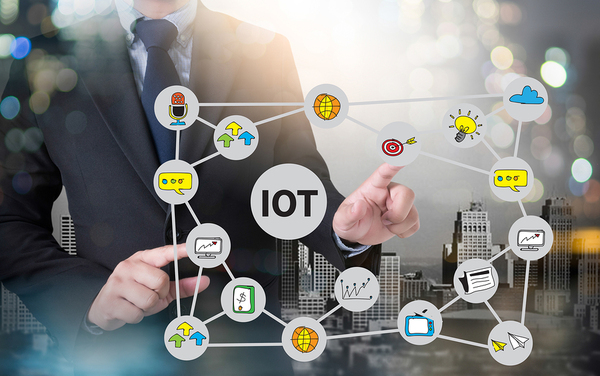The Internet of Things is changing the way we interact with objects and making the world even more interconnected. What does this evolving use of technology mean for content marketing?
The short answer is that the Internet of Things will require new content marketing strategies.
The Internet of Things (IoT) includes the billions of devices that are equipped with sensors and wireless capability that allow them to measure, track and send data to other devices and people. The technology news puts the market for IoT at 50 billion devices and $267 billion in B2B spending by 2020.
The IoT today includes everything from smart thermostats to wearable technology that can track vitals and fitness progress.
The growth of IoT comes at a time when consumers are developing different relationships with the products and services they use. Today’s consumers expect to be connected to the brands they use at any time, anywhere and on any device.
Consumers are also looking for experiences with these products and services. They want interactive opportunities to engage with these consumables and with other users. This higher level of connectedness means every Digital Marketing Agency needs to think differently about how to leverage the power of IoT within new marketing strategies for the future.
Here are a few ways content marketing business strategy will change to respond.
1. New Content
Content marketing will likely evolve beyond blogs, search engine optimization, and social media. Brands will need a new approach to content that plays to customers and potential customers who are always connected. This is why many are using tools like PaperRater to help them make their content marketing plans, as this shift will require a deeper understanding of what customers want and need from each brand. The current main areas of content marketing will remain hugely important for companies that offer the Best London SEO Services, although their focus may begin to change as the industry develops.
2. Experiences Come First
Content marketers will need to look at how to deliver content in the nexus of hardware, user behavior, and physical space. Content marketers will need to work with developers and programmers to consider what content will populate or be delivered to connected devices. There are also likely to be new partnership opportunities that emerge as brands identify how these connected objects work in tandem.
Experiential marketing is not new, but the IoT now allows marketers to deliver those experiences in new spaces. These experiences can be highly customized, triggered by actions by a user or a device, that deliver specific content that reflects behaviors, locations, identified preferences, and usage history.

Interconnected devices allow content marketers to find new partnership and revenue opportunities.
3. Data Drives Decisions
The IoT creates massive amounts of data. The challenge for content marketers is to identify the data that are most helpful to creating the experiences mentioned above. Connected devices provide information in real time, giving marketers new flexibility and opportunity.
In addition, the decision process a consumer makes to engage with the content that marketing supplies can provide even more data points. This new information can be used to fine-tune future content or create second and third opportunities to engage a user.
4. Contextual Communication
Context has always mattered and with the IoT, there is more context to be gleaned in customer interactions. Whether in a customer service situation, post-sale, or in response to search queries, content marketers have an ideal chance to provide customers with what they need when they want it.
Content marketing has changed the way brands interact. The Internet of Things is a natural evolution of that relationship that will evolve over time.
